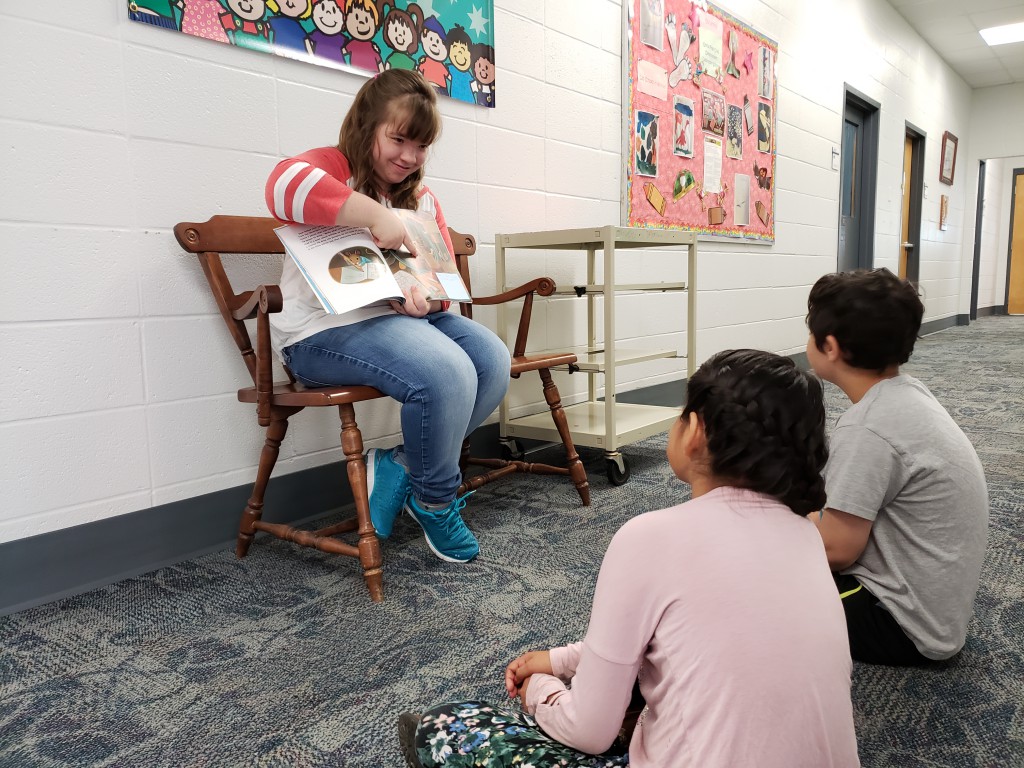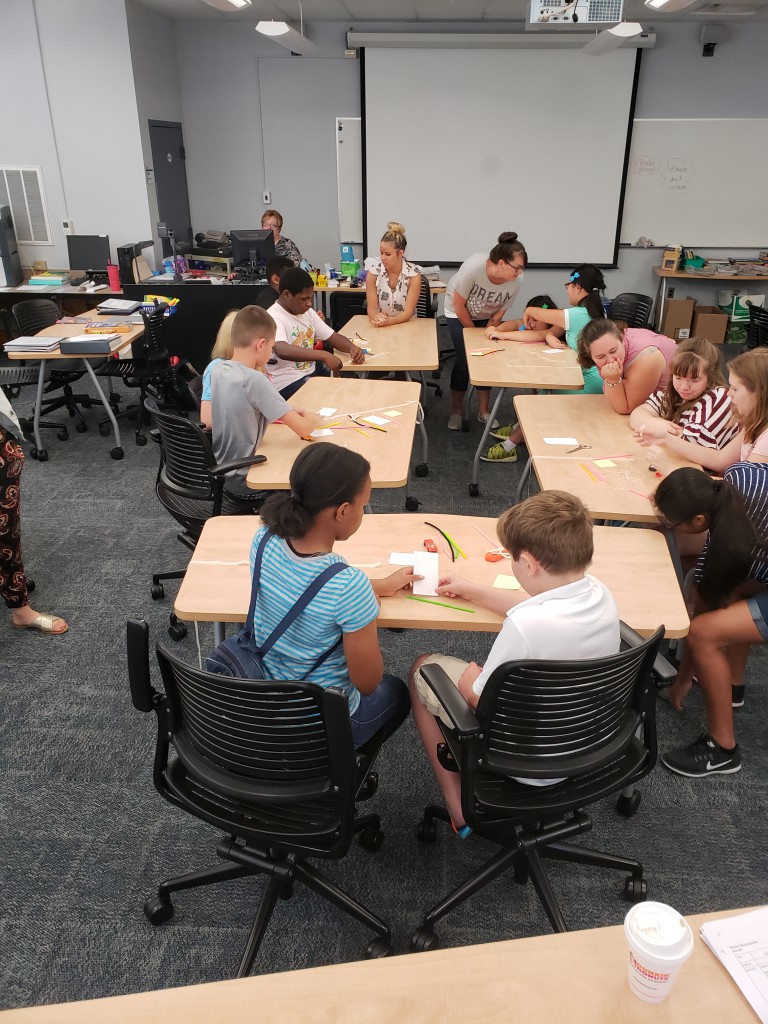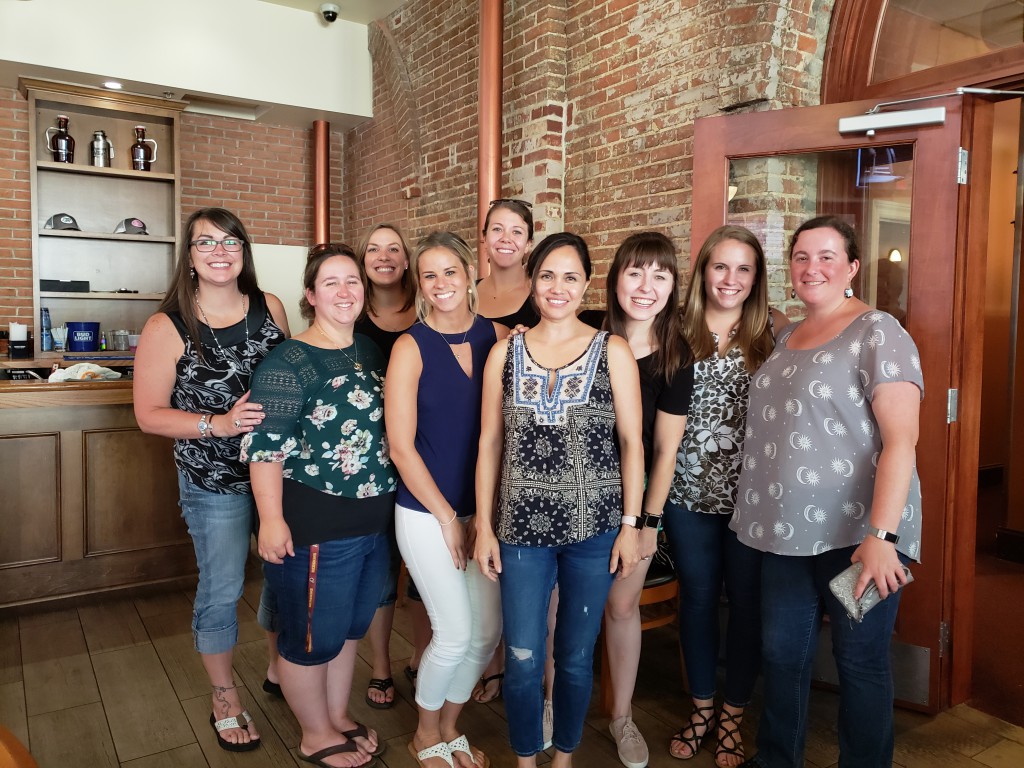Terror at the Thought of Secondary Students – Reading Clinic Part 3

Aug. 30, 2018 -- When we last left off, I had just finished teaching the elementary part of the Hood Graduate School’s Reading Clinic.
Emily Bernstein
Program
- Reading Specialization (M.S.)
Department
- Education
The capstone to get my master of science in Reading Specialization, it had been as crazy, stressful, and beneficial as I had been told. Now I was starting with the secondary clinic, featuring students who would be entering middle or high school in the coming year. I am an elementary teacher by choice – I love my littles, who are so willing to accept me as the authority (my second graders still believed that I could both sing and draw, a happy delusion). What would happen when I taught secondary students, where all the cutesy ideas and tones that motivated my elementary students could be seen with scorn?

The first part of secondary clinic was just understanding how different it would be. Unlike the elementary clinic, where we needed to decorate our classroom, plans were done and approved a week in advance, and we got testing data about our students before we even started, the secondary clinic started with a blank slate. Also, each clinician got two students with distinct needs to work with, instead of students who needed the same skills. To get information on our students, we were given their basic information and phone numbers and asked to call the week before clinic. I hate talking on the phone and was so nervous about calling the parents, but I got a lot of good information. Luckily for me, the parents of both of my students were knowledgeable about their child’s strengths, needs, and goals, so I was able to use that information to help get ready. I was also able to use the information to connect my instruction to their goals. For instance, one of my students, who wants to be a teacher, was working on reading for a purpose. She prepared a lesson around a picture book, then got a chance to read to and teach students from the elementary clinic.

When the students came in, we started by doing some testing. Since they were so different, instead of doing things together like in elementary clinic, I would work with one while giving the other one a task to do independently. This was how most of the clinic went; although I occasionally did some things with both of my students, mostly I alternated between the two. With older students, they appreciated their independence and a chance to work without me. Occasionally, I would have both working independently while I observed and got a chance to reflect on what we had already done. As an elementary teacher, this more relaxed, less structured, attitude was nice! As a group of clinicians, we fostered that independence through occasional communal STEM (Science, Technology, Engineering, and Math) projects.
While the overall workload in the secondary clinic was about the same, I found it more evenly spread and less stressful than the elementary clinic, which was unexpected! Instead of having to complete our entire week’s plans on Thursday afternoon, we planned every day for the next day after recording reflections about that day’s instruction. So much of what we worked on was making our learning relevant for our students. We found that when we treated them like young adults and showed them why what they were learning would help them, they bought into it. Being on a college campus gave us so many opportunities! When a sculpture exhibition was going up in the front of the building, the students got to talk to the artist, master of fine arts student Alex Miller. They asked some great questions and he was able to explain some of his process as an artist and exhibitor. We also did a scavenger hunt through the library. When talking about the different ways to research, we came across the microfiche machines. Although I remember doing research using these machines as a child, after almost breaking one trying to get it started, we found a librarian to help us! The students were fascinated and looked at a newspaper from 1894.
We had a great three weeks, and at the end, I decided that teaching secondary students wasn’t too bad. I was lucky since both of my students were motivated and wanted to learn, so I just had to guide them. They both enjoyed strategies that I taught them, and when asked to write a letter to me at the end, gave me some great feedback. The students got to work together to unlock an ‘escape room’, using reading comprehension to decode hints to find keys. For the last day, our lead teacher asked them about their education goals. After saying goodbyes, the clinicians worked together to pack up our classrooms, and many of us went out to lunch to celebrate. I can’t believe that it is over! We’ve been hearing about clinic since we first started the program. While it is as all-consuming as they said - we thought that working for hours every day after teaching to plan for the next day as an exaggeration – it wasn’t. We got to apply our skills, practice new ones, and became more comfortable with strategies and age groups we hadn’t worked with before!

Thank you so much to Dr. Ellen Koitz, program director of the reading specialization program and head of the elementary clinic, and Casey Day, professor and head of the secondary clinic for preparing us for clinic and supporting us through it! Although I came to you with lots of questions (SO MANY QUESTIONS), you were always ready to help all of us. We would never have learned so much and had such a great experience without you!
Are you ready to say Hello?
Choose a Pathway
Information will vary based on program level. Select a path to find the information you're looking for!
